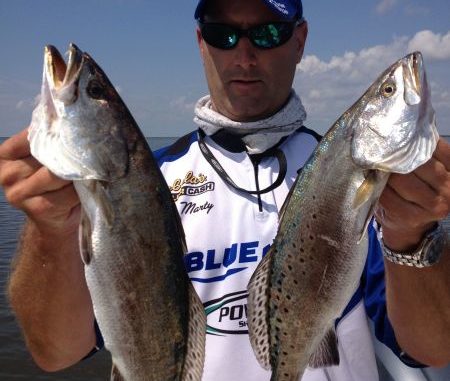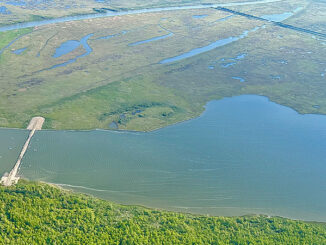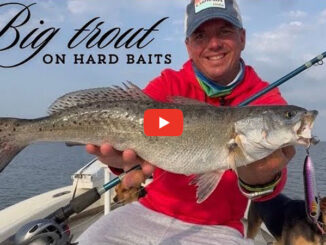
Spawn brings specks to westernmost spot in Isle Dernieres chain, guide says
May is typically moving month for speckled trout along Louisiana’s coast, as they make their transition from inside waters and head offshore to spawn.
For Capt. Marty LaCoste, with Absolute Fishing Charters out of Dularge, that means Raccoon Island is a prime May hotspot to load up on specks.
The westernmost spot in the Isle Dernieres chain — or at least what’s left of it — is still a consistent summertime producer of nice trout, usually in the 1 ½- to 2-pound range, he said.
“It used to be one huge island, with a gap that used to be 100 yards wide,” LaCoste said. “Now that’s probably almost a mile. The western side is just a little strip of sand, like a sandbar. The east side is where the rock jetties are — it’s a pelican nesting site.
“Coon Point, on the west side of the island, makes a big sandbar that goes out west, and that’s usually full of fish right there. But the whole island is a good spot — the front, the back and the rocks.”
Wind is the deciding factor on where LaCoste might target a spot on the island on a particular day.
“There were a lot of days last year when the wind was blowing 20 or 25 mph, which makes the Gulf side totally unfishable,” he said. “But if I can fish the Gulf side, I’ll be on the Gulf side. If you have a strong south wind, you’ll be fishing the backside.”
If conditions are right and the water is calm, LaCoste said the topwater bite can be awesome early. As always, the key is to be on the lookout for signs of activity on the water.
“I’m basically running the beach looking for bait, looking for slicks or looking for birds. Any activity on the water,” LaCoste said. “Sometimes you pull up and there’s shrimp jumping. Sometimes you don’t see anything, and we go straight to the rocks, or we start over one of the sandbars.
“Nine times out of ten the fish are there, so you just need to start drifting and fishing and find them. Once you get on them, drop your Power-Pole or anchor, and then sit there and hammer them.”
This time of year, LaCoste normally throws double-rigs, featuring two ¼-ounce jigheads with various colors of Matrix Shad soft plastic paddletail lures.
“I usually always start with two different colors. Purple and chartreuse, and avocado or green hornet, over the past umpteen years, have been the favorite colors,” he said. “Sometimes that ultraviolet works. Once you’re out there a few days, you get the feel of what they’re wanting and then you kind of stick with those colors.”
Depending on your location, LaCoste said you need to be able to reach the rocks, but not throw on top of them.
“There’s lots of rocks underwater and people always get hooked up,” he said. “But you want to be where you can cast to the rocks, because sometimes they’re on the rocks, sometimes they’re on the points and sometimes they’re in the middle of the gaps.
“So you’re basically just trolling around until you find them.”
Typically, allowing your lures to reach the bottom isn’t necessary.
“Nine times out of ten, it’s a slow steady retrieve. Most of the fish are suspended. That’s the norm,” LaCoste said. “I’m not letting it get to the bottom. I’m casting out, maybe letting it drop for a couple seconds, and then I just start reeling slow.”
In combination with the Matrix Shad, LaCoste is also a fan of using Crappie Psychic trout trailers threaded onto the jighead hook. He rigs up with 30-pound Fins Windtamer braid, and doesn’t use a leader of any kind.
“If I’m fishing a single jighead, I tie my braid direct to the jighead,” he said. “And I tie my braid direct to the double rig. I don’t use any leaders, and they don’t seem to care.”
The braid comes in handy, as bull reds often work along the island’s edges.
“Sometimes you pull up in the morning and the bull reds are everywhere, like a red tide,” LaCoste said. “We’ll actually start trout fishing and then all of sudden, all the redfish come up and everyone’s hooking redfish.
“The trout bite’s over then, so you have to move, but people love that, too.”


